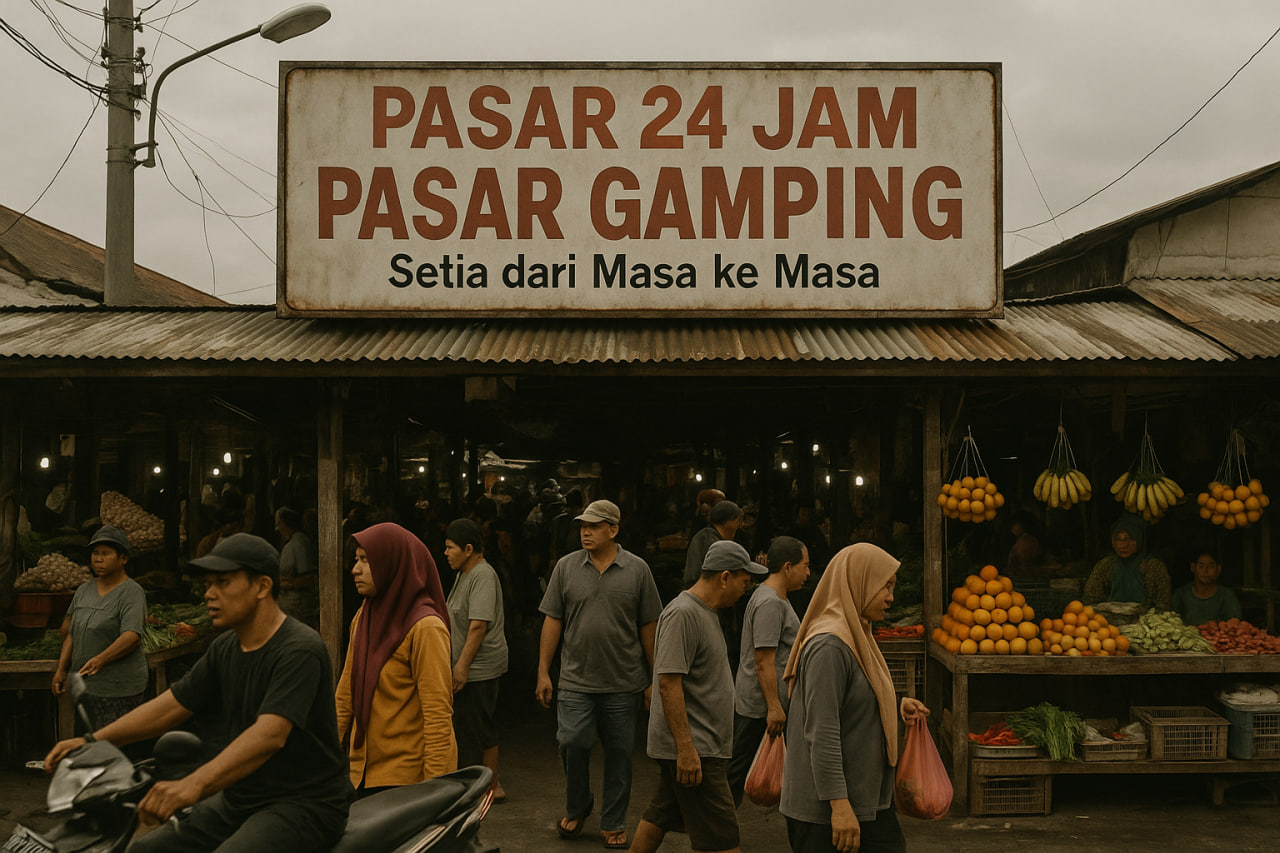News
Pasar Gamping: A 24-Hour Market That Stands the Test of Time
Pasar Gamping is one of the oldest and largest traditional markets in Sleman Regency, Yogyakarta. It has long served as a vibrant economic hub for the community—its roots stretching as far back as the era of the Old Mataram Kingdom, even before the kingdom split into two separate realms. Strategically located on Jalan Wates KM 3.5–5 in Ambarketawang Village, Gamping District, the market spans approximately 1.5 hectares.
A Market with Deep Historical Roots
In earlier times, Pasar Gamping was a popular stopover for traders from across Java who arrived with ox-drawn carts carrying goods. This suggests it was already an important commercial center, frequented by merchants of significant social standing. More than just a place of trade, it has long symbolized the hardworking spirit of those striving to support their families and secure a better future.
Over time, Pasar Gamping developed into a key retail center for fresh fruit in Yogyakarta. Unlike the nearby Ambarketawang Wholesale Market, which caters to bulk buyers, Pasar Gamping focuses on individual shoppers seeking fresh produce at affordable prices. Beyond fruit, the market also offers a wide variety of household items, vegetables, clothing, and everyday essentials.
Market Structure and Daily Activity
Pasar Gamping is organized into several blocks, each serving a different function:
-
Front Block: Home to vendors selling staples, household goods, clothing, bags, shoes, watches, sunglasses, and accessories. It typically opens around 6:00 AM.
-
Middle Block: A space for clothing, shoes, sandals, and accessories—this area varies in terms of cleanliness and organization.
-
Back Block: The earliest to open (around 3:00–5:00 AM), dominated by fresh produce vendors selling fruits, vegetables, meats, and cooking ingredients.
The market operates under a kiosk system, with stall rentals paid upfront according to agreements between sellers and the local government, which manages the market.
A Nearly 24-Hour Market
Pasar Gamping is well known for its near 24-hour operation, especially in the back block that supplies daily staples and fresh food starting in the early hours. This reliability makes it a go-to destination for locals and traders seeking fast, fresh supplies—whether for household needs or business stock.
Cultural and Economic Significance
More than just a marketplace, Pasar Gamping stands as a living witness to the socio-economic development of Yogyakarta. Its proximity to Mount Gamping—once a major source of limestone used in building the Yogyakarta Palace—adds historical depth to the area.
Pasar Gamping is a reflection of the perseverance and dedication of its sellers, who labor tirelessly to meet daily needs and support their families. For the wider community, the market remains an affordable, comprehensive, and accessible shopping option, with fresh fruit prices that are often lower than those found in shops or from street vendors.
Still bustling and relevant today, Pasar Gamping continues to be a vital, dynamic part of daily life in Yogyakarta—bridging the past and present through the rhythm of trade, tradition, and community.



